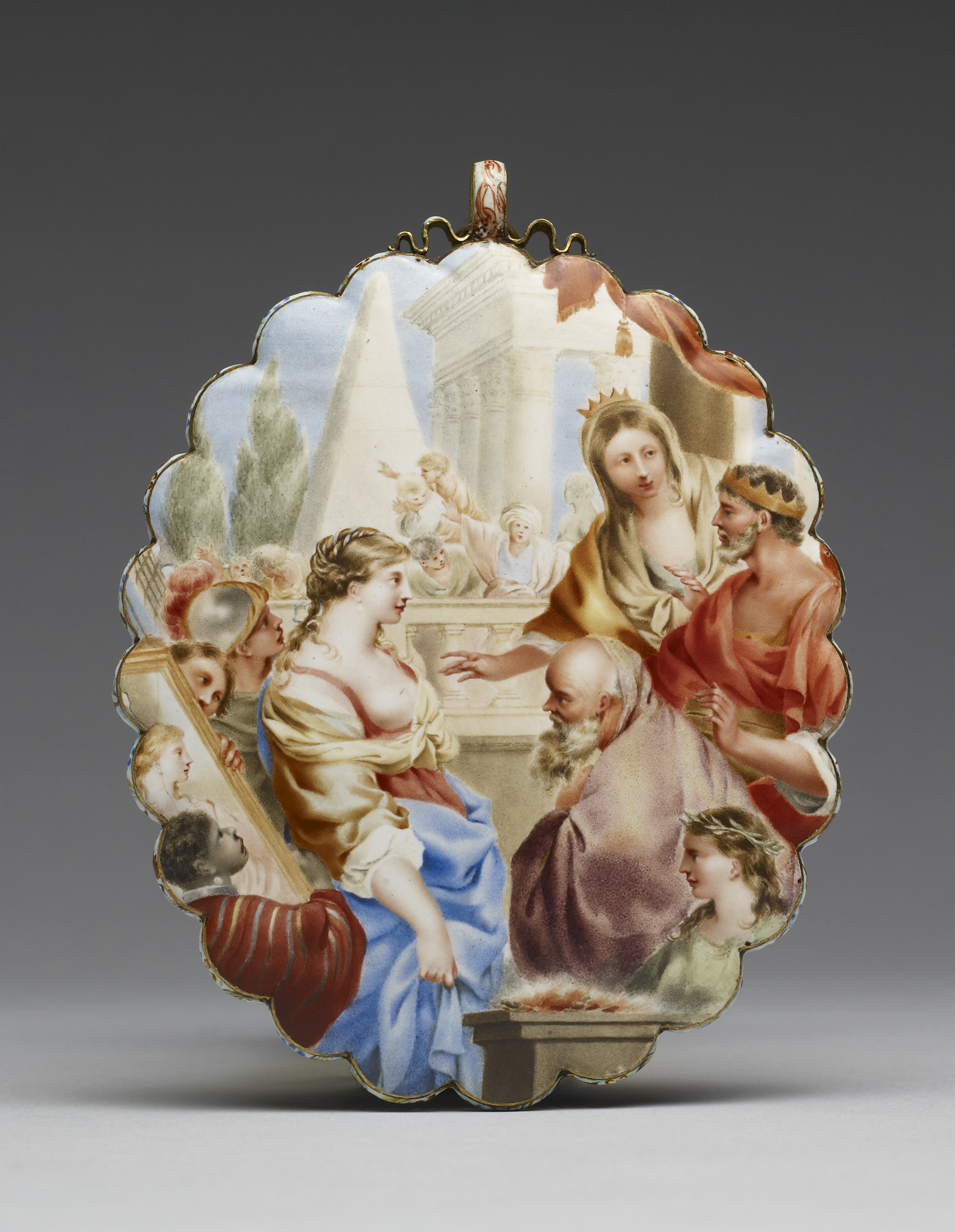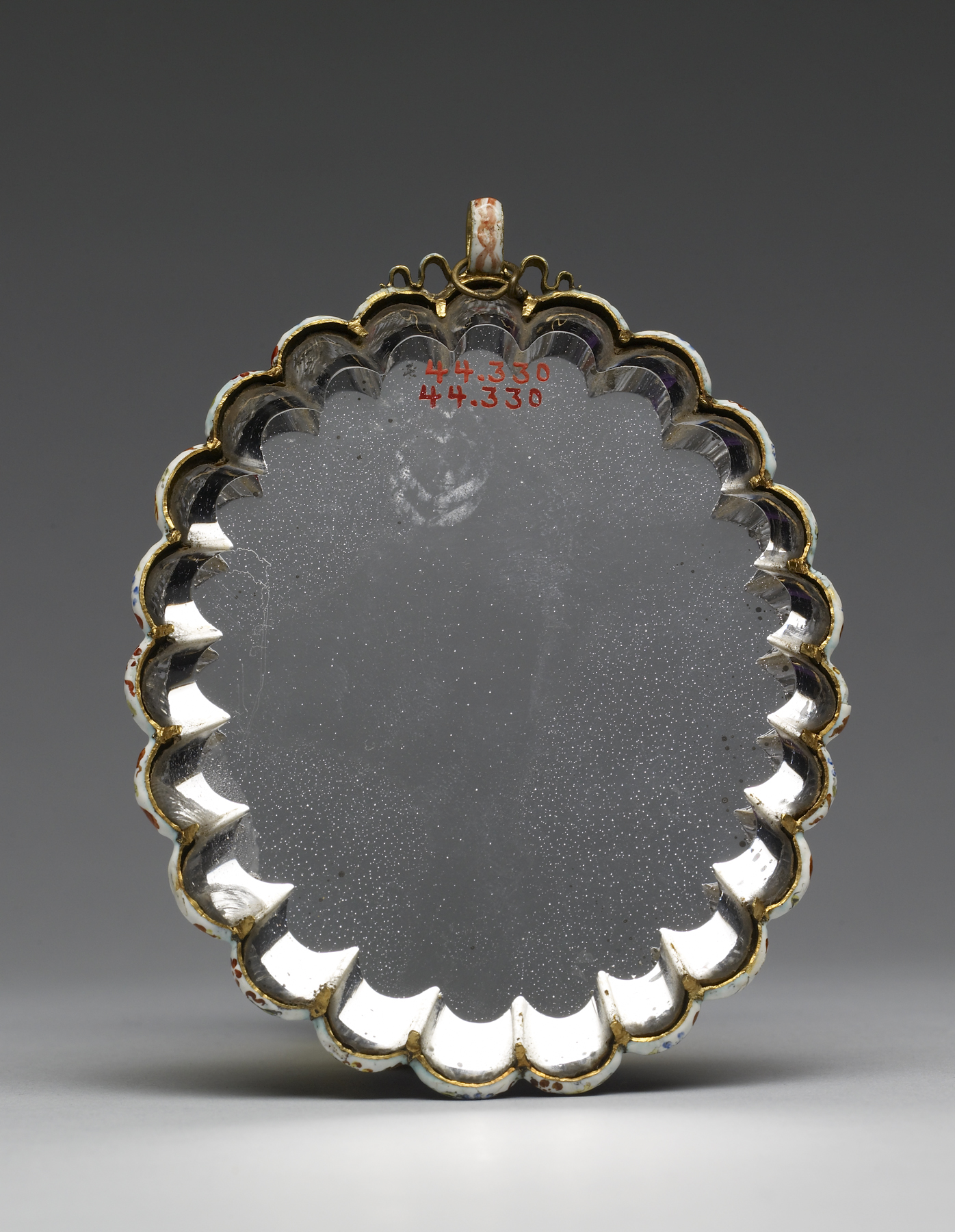Chariclea, an Ethiopian Princess, Reconciled with Her Parents, King and Queen of Ethiopia
(Baroque Europe )
Clariclea, a princess of Ethiopia who was miraculously born white to black parents and abandoned, here returns to Ethiopia and reconciles with her parents. The ancient Greek tale, virtually unknown today, was popular in France during the 1600s, not as a story about Africa but as the exemplary story of a princess with grit. Chariclea’s parents are depicted as white, perhaps so that the purchaser of such a fashionable mirror could identify with the heroine.
Henri Toutin developed a new technique that permitted a white gound instead of the black used previously. It revolutionized the pictorial effects of painted enamel.
Provenance
Provenance (from the French provenir, 'to come from/forth') is the chronology of the ownership, custody, or location of a historical object. Learn more about provenance at the Walters.
Acquired by Henry Walters, Baltimore, 1913; by bequest to Walters Art Museum, 1931.
Conservation
| Date | Description | Narrative |
|---|---|---|
| Treatment | cleaned; examined for exhibition |
Geographies
France (Place of Origin)
Measurements
H: 4 1/8 x W: 3 1/4 in. (10.5 x 8.3 cm)
Credit Line
Acquired by Henry Walters, 1913
Location in Museum
Accession Number
In libraries, galleries, museums, and archives, an accession number is a unique identifier assigned to each object in the collection.
In libraries, galleries, museums, and archives, an accession number is a unique identifier assigned to each object in the collection.
44.330






